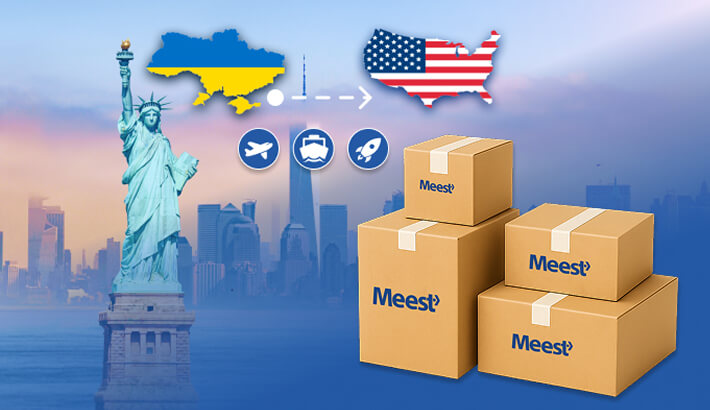


What Does Pre-Shipment Mean?
The pre-shipment phase in order processing and delivery is rather self-explanatory, as this is the period that stretches from the packaging until the labelling until the carrier receives that package for delivery. Analysis of customer reviews shows that this stage is just as important as the speedy and safe delivery itself, so more and more companies pay attention to it and ensure it functions without breaches.
Whether you are a business owner or the end customer, the pre-shipment stage impacts you. Thus, let’s explore what does pre-shipment mean, how it works, and how long does pre-shipment take. Moreover, let’s review key considerations and optimization practices that are worth implementing for the enhanced experience.
Understanding the Pre-Shipment Phase
It begins with the label creation for the package and finishes with scanning the package by the carrier. All that time in between, when the package is ready for delivery but it is not yet received by the last-mile delivery, is called the pre-shipment, or pre-transit, phase.
To close that gap between the time when the order is packed and transited and let the end customer be updated about the status of their order, businesses and fulfillment companies have designed a system of notifications to ensure all the parties stay informed.
Depending on the company and service provider, the specific process for notifications may be slightly different. Still, the most common scenario is as follows:
- The order is packed and labelled.
- The carrier is notified about it, and it prepares to pick up the package.
- The carrier sends a notification to the recipient informing them that the parcel is soon to arrive at its facility and to be shipped soon.
The pre-shipping stage normally includes the following components:
- secure packaging of a parcel to prevent damage during transit;
- verification of the shipping information accuracy and printing the label;
- scheduling of the carrier pickups or preparing for drop-offs at the carrier’s facility.
These steps ensure the parcel is ready for smooth and timely delivery, minimizing delays and potential issues. A well-executed pre-shipping stage creates the foundation for a successful fulfilment process and customer loyalty in companies like Meest-America.
Why It Matters?
While notifications about the pre-transit phase seem unnecessary, they actually are vital for customer satisfaction and peace of mind. Especially in cases of delays.
Imagine you have made an order at one of the online stores and paid in advance. Then, two to three days pass after the last notification from the store about your order status. You receive no updates and start feeling anxious.
Now imagine that there was no silence for three days, as you received status updates and knew that your order was packed, labelled, and would soon enter the shipping network. You will feel calm and stay patient, as you know your parcel is about to be in transit and should be delivered on time.
This difference in keeping customers informed can enhance their overall satisfaction with the service significantly, so it is certainly worth implementing those pre-transit notifications.
How Long Does the Pre-Transit Stage Last?
The exact time a package spends in pre-shipment depends on the business and how efficiently its operations are organized. If the business has all the systems and workflows optimized, pre-transit might take no more than 1 day. Sometimes it can even be a couple of hours.
This, however, can take anywhere from 2 to 5 days. Why is pre-shipment taking so long? This happens for a few reasons. But the main ones are a lack of optimization and unification of all systems. There are also busy periods during big sales or holidays when the volume of processes is too high. Technically, there can still be temporary operational problems or software failures.
While holidays or sales periods do not require much interference, having a digital and fully automated system is crucial to reduce the duration. Business can make it more efficient via:
- locating items instantly;
- processing orders in bulk;
- automating label creation.
With the adoption of these solutions and selecting the right Mist-America delivery, the preparation of deliveries becomes faster and hassle-free.
Best Strategies Businesses Can Use to Optimize the Pre-Shipment Stage
In addition to the above, there are some simple steps you can take to make the process much simpler and more flexible for staff.
1. Confirm Orders to Decrease the Number of Returns and Eliminate Errors
It is essential to verify that all shipping details are correct before printing the label. Double-checking the information with the customer is one of the effective ways to do this. As well as reviewing the information right before label creation.
This way, it is possible to decrease the number of operational errors, reduce reverse logistics costs, and enhance overall process reliability. As a result, businesses receive better customer satisfaction.
2. Consolidate Orders with Similar Shipment Locations
Order consolidation is an effective way to reduce operational costs. Shipping software allows businesses to analyze locations and group orders. Thus, having smarter logistics at a lower cost.
3. Have the Best Carrier Selection Rules in Place
Sticking to one carrier is not efficient in terms of cost and performance, so it is worth implementing dynamic carrier selection. Access real-time carrier comparisons to select the most economical and reliable option for each shipment. This way, businesses can keep operational costs under control and, at the same time, enhance customer satisfaction.
4. Send Personalized Pre-Shipment Notifications
Make sure to keep customers informed and engaged by sending them automated emails or SMS messages through branded tracking portals. You can include such essential details as order status, carrier info, and estimated delivery date. This level of transparency reduces uncertainty, minimizes customer support requests, and reinforces the brand’s reliability.
Make those notifications personalized by adding useful information like product usage tips or thank-you notes. This way, you can boost loyalty and post-purchase satisfaction.
Conclusion
The pre-transit phase in order delivery is as important as the process of delivery itself. The smart organization of this phase can reduce costs on parcel shipments, prevent unexpected spending on product returns, and enhance customer satisfaction through constant updates of their order status. Optimization of this phase is key to successful business operations. So, make sure to constantly implement effective techniques to ensure shipment accuracy and reduce the time between packs.

















